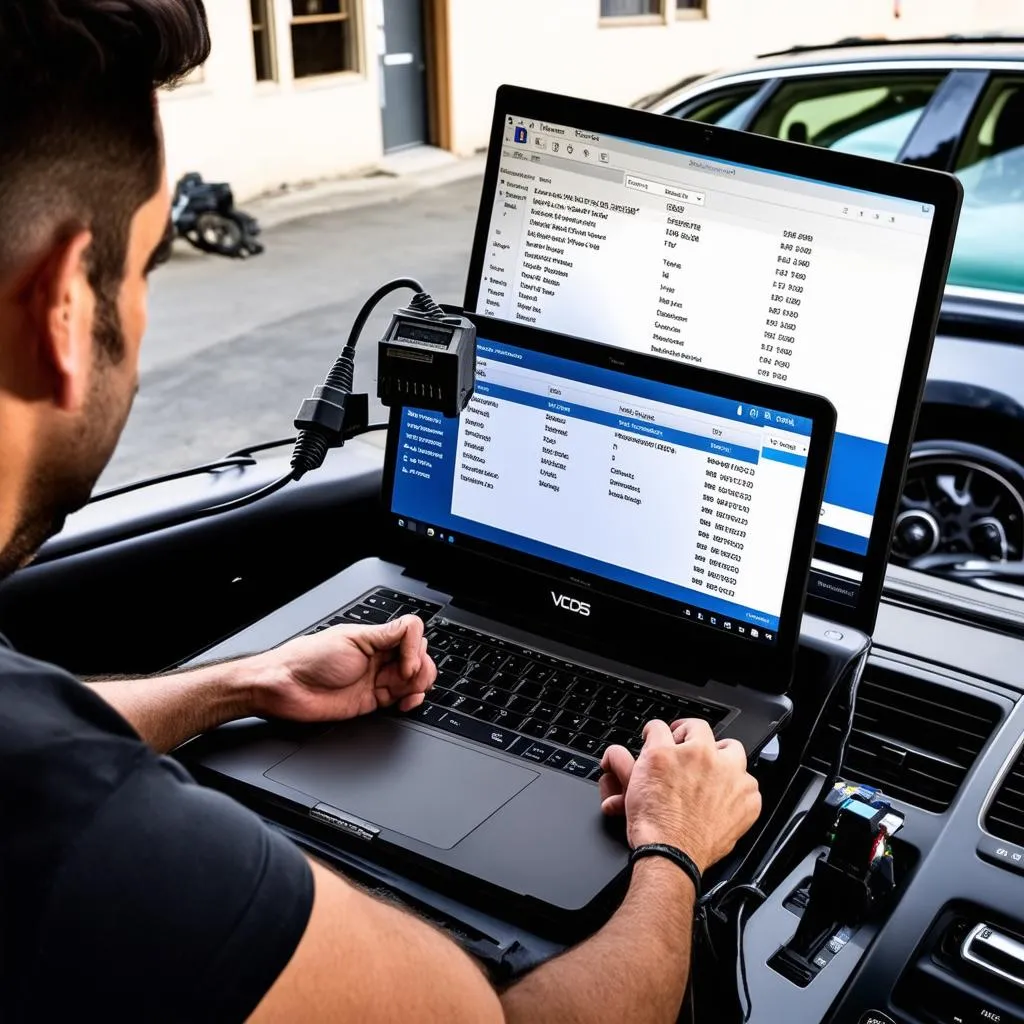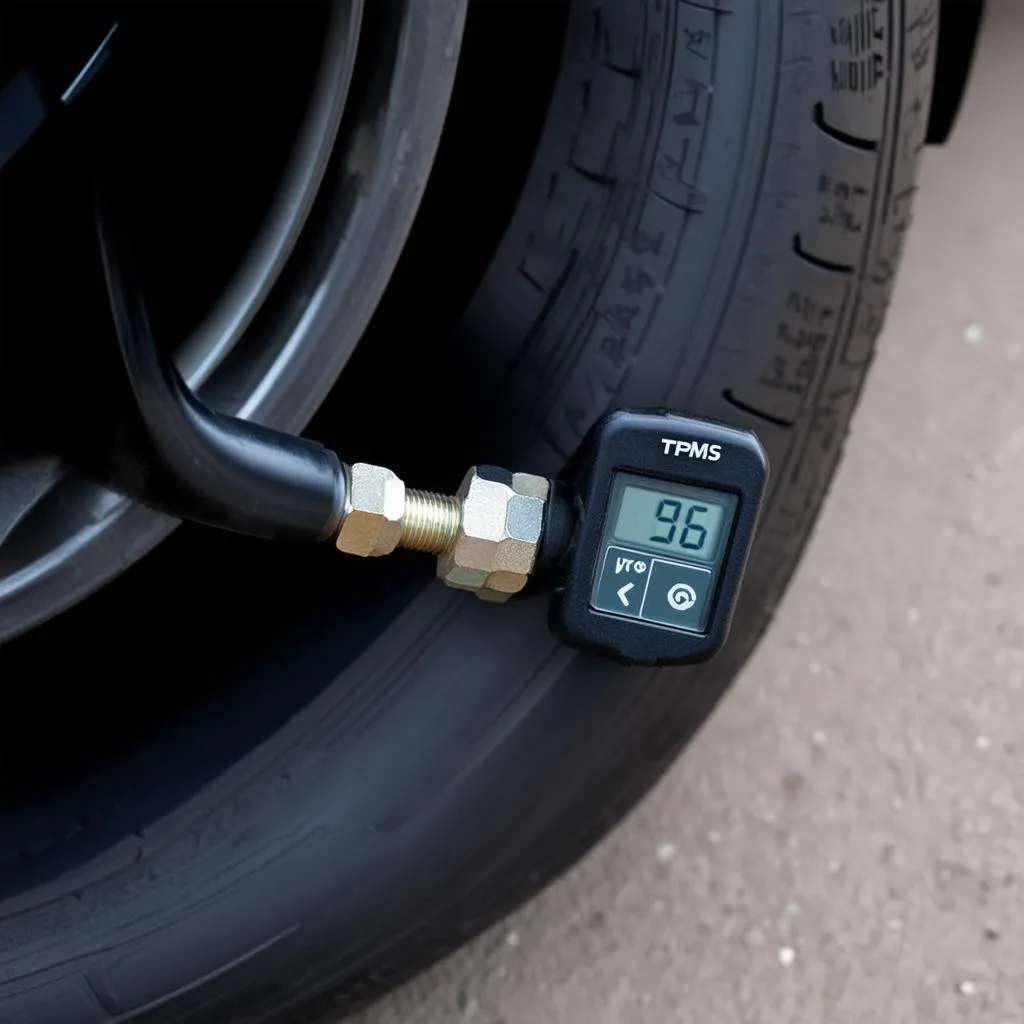How To Reset TPMS With VCDS: A Comprehensive Guide
Have you ever driven your car and noticed that the TPMS (Tire Pressure Monitoring System) light is on, even though you know your tires are inflated properly? You’re not alone! This is a common problem for many car owners, and it can be a real headache. Luckily, there’s a simple solution: resetting your TPMS using VCDS. Let’s dive into how to do it.
Understanding TPMS and VCDS
What is a TPMS?
The TPMS system is a safety feature found in most modern cars that monitors tire pressure. It uses sensors embedded in each tire to measure the pressure and alerts the driver if there’s a problem. This early warning system can help prevent dangerous blowouts and ensure safe driving.
What is VCDS?
VCDS (Vehicle Diagnostic and Coding System) is a popular diagnostic tool for Volkswagen Group vehicles, including Audi, Skoda, Seat, and Volkswagen. It allows you to read fault codes, adjust settings, and even reset various systems on your car, including the TPMS.
Why Reset TPMS with VCDS?
You might need to reset your TPMS with VCDS for a few reasons:
- After Replacing Tires: When you replace your tires, the new sensors may need to be paired with your car’s system.
- After Adjusting Tire Pressure: If you adjust the tire pressure to a different setting (for example, for a long trip), it may be necessary to reset the TPMS.
- After a Tire Pressure Sensor Fault: If a TPMS sensor malfunctions, resetting the system can sometimes fix the problem.
However, it’s important to note: TPMS reset with VCDS may not be the solution in every situation. There may be instances where a tire sensor is damaged and requires replacement.
Resetting TPMS with VCDS – Step-by-Step
This process is relatively straightforward:
- Connect VCDS to Your Car: Plug the VCDS cable into your car’s OBD-II port and connect the other end to your laptop.
- Start VCDS: Open the VCDS software and select your car’s model and year.
- Navigate to TPMS Settings: Go to the “Tire Pressure Monitoring System” or similar section in the VCDS menu.
- Select the TPMS Reset Option: Depending on your car, this option may be labeled “Reset TPMS,” “Learn TPMS,” or something similar.
- Follow VCDS Instructions: The software will guide you through the process. This may involve turning the ignition on and off, inflating tires to the correct pressure, and driving a short distance.
- Verify the Reset: After completing the process, check your dashboard to ensure the TPMS light is off. If it’s still on, you may need to repeat the steps or investigate further.
Here’s an example of the process based on a 2019 Audi A4:
- Select “19 – Tire Pressure Monitoring System”
- Choose “Basic Settings – 04”
- Select “1 – Learn TPMS”
- Follow the prompts on the screen.
Note: VCDS is a powerful tool, and it’s crucial to use it correctly to avoid causing damage to your car. If you’re not comfortable using VCDS, consult with a qualified mechanic for help.
Common Questions about TPMS Reset with VCDS
- Will resetting TPMS clear the fault code? Yes, resetting TPMS will often clear the fault code associated with a TPMS issue.
- Can I reset TPMS without VCDS? While some newer vehicles allow TPMS reset through the dashboard menu, most require a diagnostic tool like VCDS.
- Is it safe to reset TPMS myself? It is generally safe if you follow the instructions correctly and have a basic understanding of VCDS. However, if you’re unsure, it’s best to consult with a professional.
TPMS Reset – A Feng Shui Perspective
Believe it or not, there’s a Feng Shui connection to TPMS reset! Feng Shui emphasizes the flow of energy and harmony in our surroundings. Just like a balanced tire pressure promotes smooth driving, harmonious energy flow in your car can lead to a more positive experience.
Consider these points:
- Maintaining Proper Tire Pressure: This aligns with the Feng Shui principle of balance and harmony.
- Addressing Malfunctioning TPMS: This addresses any disruption in the car’s energy flow.
- Resetting TPMS: This allows for a fresh start and promotes smooth energy flow.
Related Articles
- Audi A4 Key Programming with VCDS: https://cardiagxpert.com/audi-a4-key-programming-vcds/
- Audi A3 8V Drive Select – VCDS: https://cardiagxpert.com/audi-a3-8v-drive-select-vcds/
- ABS Control Module Reset – VCDS: https://cardiagxpert.com/abs-control-module-reset-vcds/
Call to Action
Need assistance with TPMS reset or any other VCDS related tasks? Contact our team of automotive experts today for 24/7 support. We’re here to help!
Whatsapp: +84767531508
Conclusion
Resetting your TPMS with VCDS is a simple yet effective solution for resolving TPMS issues. Whether you’re replacing tires, adjusting pressure, or experiencing a sensor fault, this procedure can help restore your car’s TPMS system to optimal functionality. Remember, maintaining a balanced tire pressure is not only crucial for safe driving but also aligns with the Feng Shui principle of harmony!
If you have any questions or need further assistance, don’t hesitate to leave a comment below. We’d love to hear from you!
 VCDS TPMS Reset
VCDS TPMS Reset
 TPMS Sensor
TPMS Sensor
